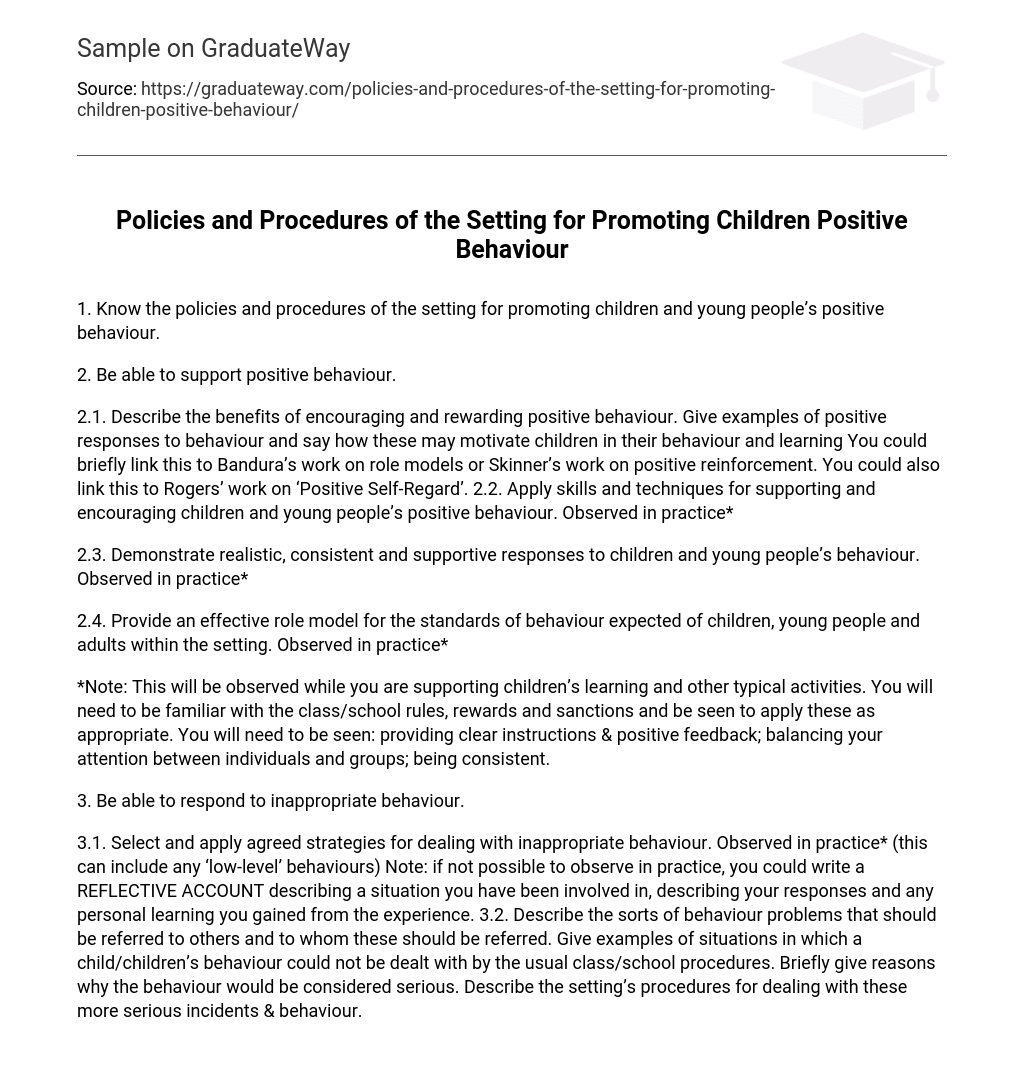Acquainting oneself with the policies and procedures of the setting is crucial for promoting positive behavior in children and young people.
2. Have the ability to encourage and endorse positive actions.
2.1. Explore the advantages of encouraging and acknowledging positive behavior, providing examples of favorable reactions to conduct and explaining how they can inspire children in their behavior and education. This may include references to Bandura’s role model theory, Skinner’s positive reinforcement concept, and Rogers’ notion of ‘Positive Self-Regard’.
2.2. Utilize strategies and methods to cultivate and motivate positive behavior in children and young individuals, emphasizing practical application.
2.3. In practice, show genuine, reliable, and encouraging reactions to children and young people’s conduct.*
2.4. Demonstrating appropriate behavior as a role model for children, young people, and adults in the setting. This is observed in practice.
Note: You will need to observe these guidelines while supporting children’s learning and other typical activities. It is important to be familiar with the class/school rules, rewards, and sanctions and apply them appropriately. You should be seen providing clear instructions and positive feedback, as well as balancing your attention between individuals and groups in a consistent manner.
3. Have the ability to address inappropriate behavior.
3.1. Choose and implement agreed-upon strategies for addressing inappropriate behavior. This can include any minor behaviors that you observed in practice. If it is not possible to observe in practice, you may write a reflective account about a situation you were involved in. Describe your responses and the personal lessons you learned from the experience. 3.2. Identify the types of behavior problems that should be reported to others and specify who these reports should be made to. Provide examples of situations in which a child or children’s behavior could not be resolved using the usual procedures of the class or school. Briefly explain why the behavior would be considered serious. Describe the procedures that the setting follows for addressing these more serious incidents and behavior.





